Ferenc Szisz, the world's first Grand Prix winner.
If you've been to the Hungaroring, you may have seen this statue next to the main entrance:
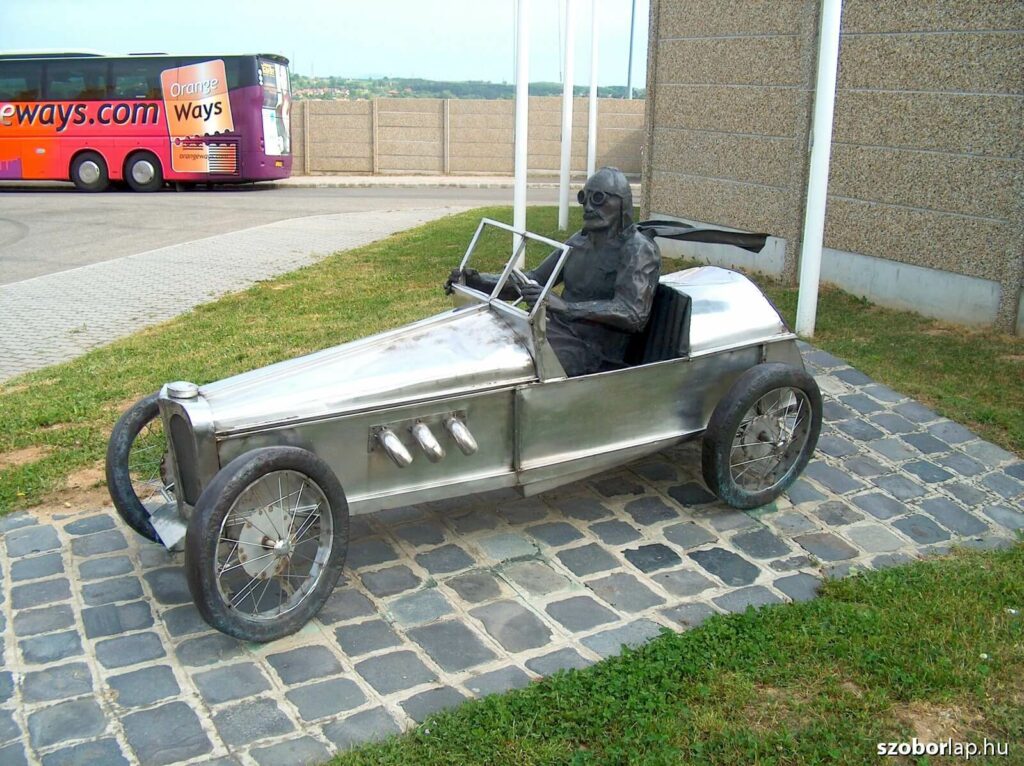
Those who approached it may have read the sign that proclaims.
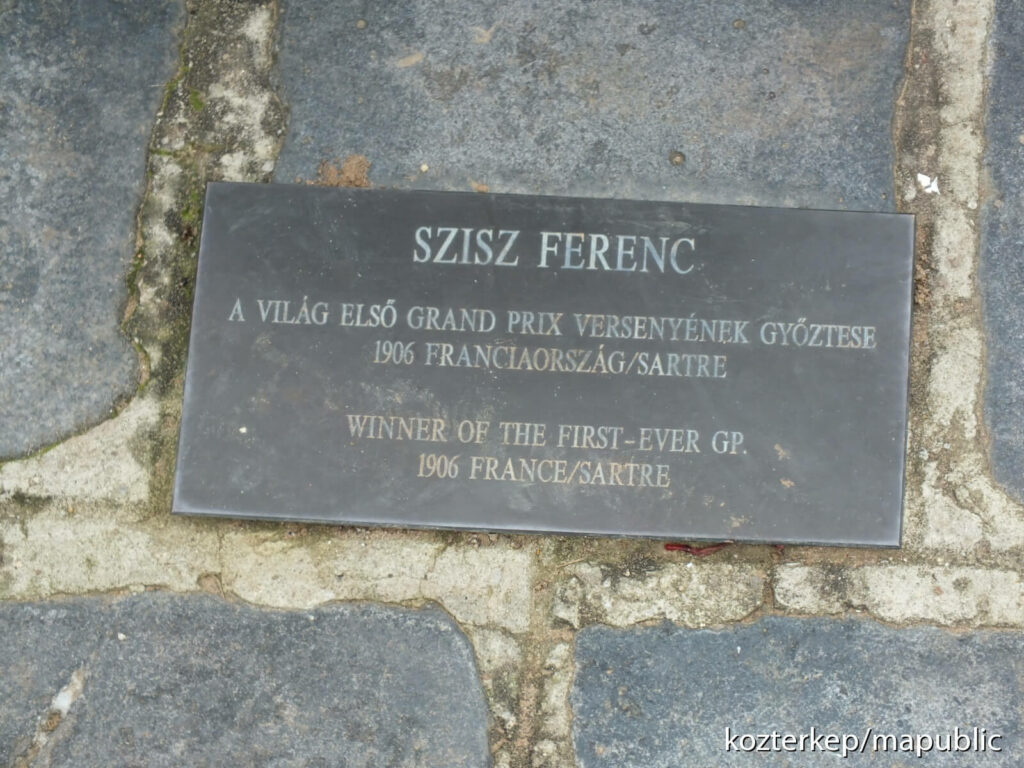
...the statue depicts Ferenc Szisz, the world's first Grand Prix winner.
But who was the Hungarian-born Ferenc Szisz, who started out from Szeghalom and conquered not only the world of motor racing, but also wrote his name into the history of Renault and the universal car industry with his patents?
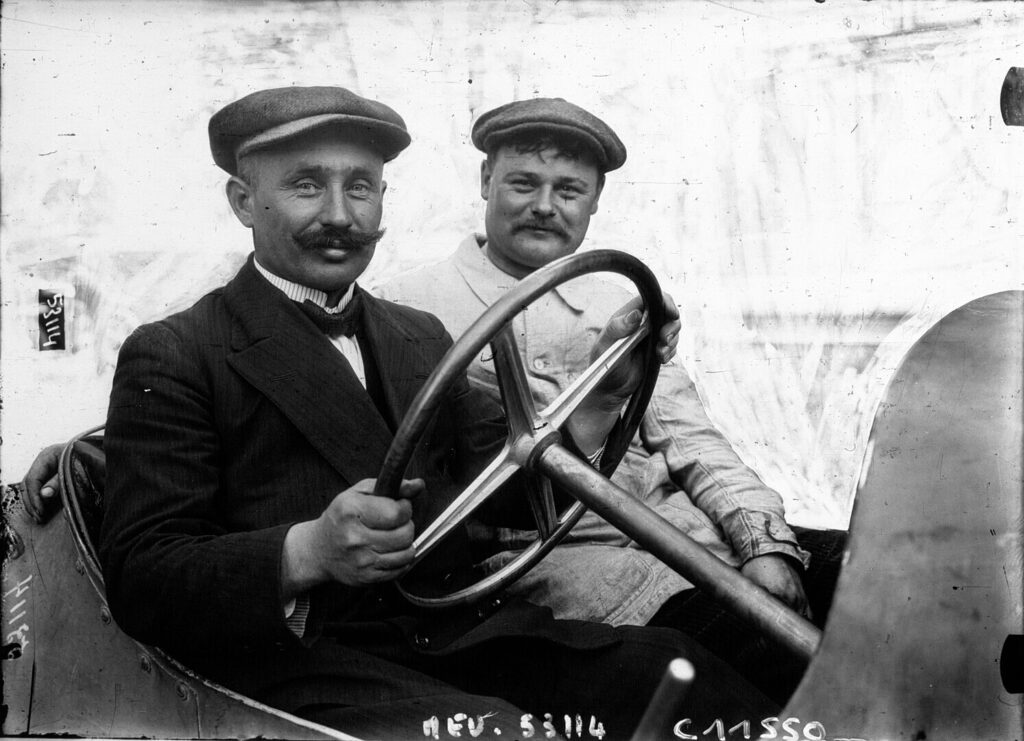
Ferenc Szisz at the 1914 French Grand Prix (source: wiki / Agence de presse Meurisse
Ferenc Szisz was born on 20 September 1873 in Szeghalm. His ancestors were Transylvanian Saxons, and the family name comes from the German süß (sweet). His father moved to the "capital of Sárrét" after his participation in the 1848-49 revolution and freedom struggle. His father, János Szisz, was a master cavalryman and his mother, Julianna Somogyi, a housewife. Ferenc was the sixth of seven children. He began his schooling in Doboz, where he worked as a farm officer on his father's estate, Count Frigyes Wenckheim.
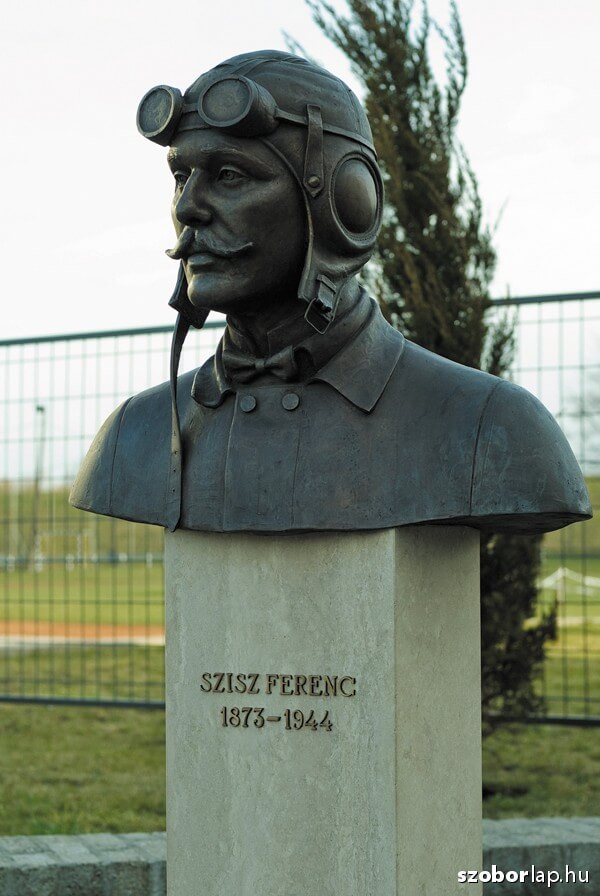
His hometown Szeghalom also has a statue in his memory.
The boy's interest in engineering soon became apparent. He was admitted to the Seghalmi manor machine shop, and later studied at the Gyula grammar school. In his early twenties, earning his living as a locksmith and copper-caster, Siszt was fascinated by the growing popularity of cars, so he studied engineering in his spare time while working.
At the age of twenty-seven, he and his Austrian-born wife Elisabeth Dorn, after having visited Vienna, Salzburg, Munich and Berlin, settled in Paris in the spring of 1900, where he finally found work in 1901 with Renault.
At Renault
A mechanical engineer and inventor by training, his engineering talent was quickly recognised by the Renault brothers: his patents were bought and he was given unlimited opportunities for experimentation and development. He significantly improved Renault's competitiveness with his inventions and innovations, created the first controlled self-ignition engine and replaced the crankcase with a compressed air starter. His talents made him increasingly indispensable in Renault's testing department, and when the company became interested in racing, he was chosen as Louis Renault's mechanic for races in 1902. Marcel Renault became a driver for the team after his death in 1903 at the Paris-Madrid motor race. He finished fifth in the Gordon Bennett Cup knockout race at the Circuit d'Auvergne near Clermont-Ferrand. In October of the same year, Renault, together with several French and Italian car manufacturers, sent a team to the United States of America to take part in the Vanderbilt Cup on Long Island (New York). In a field that included Felice Nazzaro and Louis Chevrolet in Fiat, Ferenc Szisz finished fifth behind the winner, another Frenchman, Victor Hémery, who was driving a Darracq.
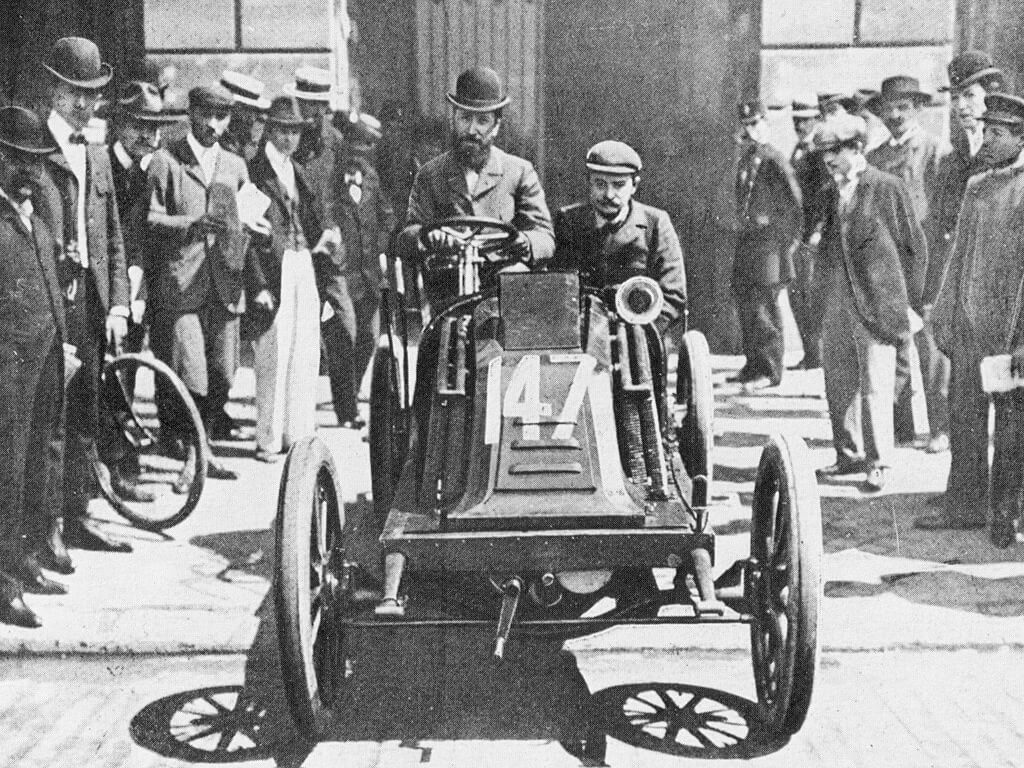
Marcel Renault at the wheel, whose unfortunate death opened the door to racing for Sisi (source: flickr / Cor Draijer)
In 1905, he was appointed head of the Renault testing department, and although this position often prevented him from racing, on 26-27 June 1906 he wrote his name forever in the annals of motor racing: with his mechanic, M. Marteau as driver of the Renault AK 90CV, number 3A, he won the first Grand Prix, covering the roughly triangular 103.18 km of the Le Mans - Saint Calais - Ferté Bernard road, six times a day. Thirty-two cars took part in the two-day race, of which 16 were eliminated on the first day due to the heat and five on the second. Sis's commanding victory, by 32 minutes, over the less powerful Renault - with just 90 hp - was made possible by a technical innovation: the Michelin brothers' new tyre, mounted on an easily replaceable rim. Sisi finally achieved a sensational average speed of 100.8 km/h: 1238.16 km in 12 hours 14 minutes 7 seconds. His performance made him popular all over Europe, with postcards and posters. He was awarded a 45,000 franc prize for his victory, was granted French nationality and was the first driver to receive state recognition in France.
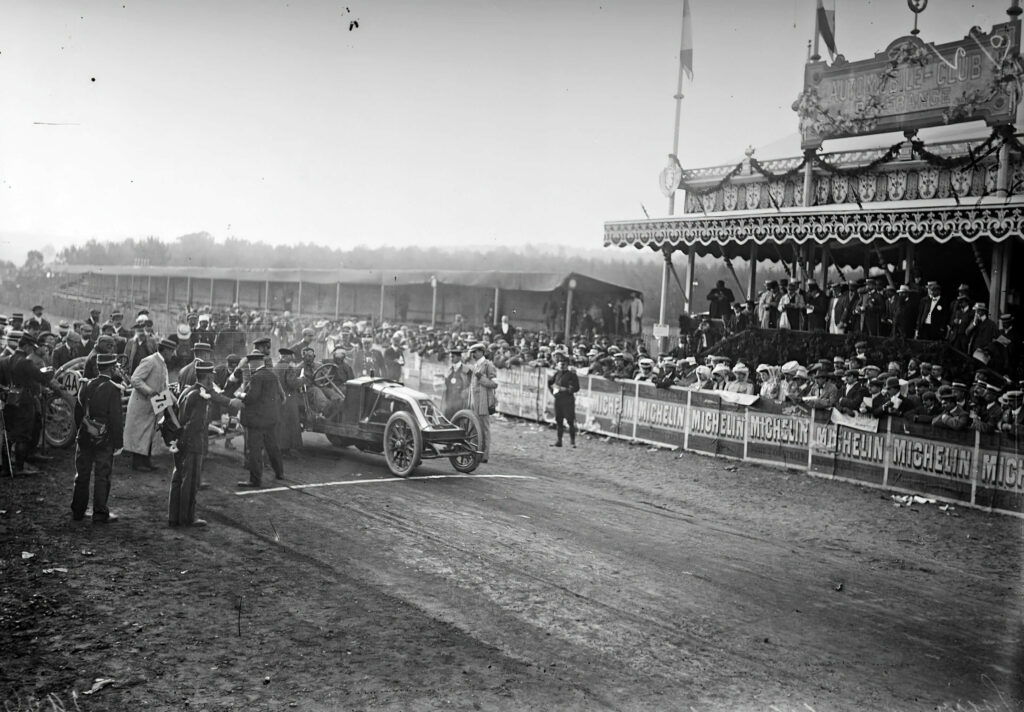
The start of the 1906 French Grand Prix. Ferenc Szisz at the wheel (Image source: Fortepan / French National Library)
Sis' Grand Prix victory and the commercial success of the race soon led to the organisation of several other Grand Prix races in Europe. The following year, the Italian Felice Nazzaro (who finished second behind Sisi in 1906) won the second French Grand Prix. A French national hero, Sisi also took part in the 1908 race, but failed to finish and suffered a similar fate due to technical problems at the Savannah Grand Prix in Georgia, organised by the American Automobile Club.
The independent competitor and entrepreneur
At the beginning of 1909, Sisi left the Renault company to open his own workshop in Neuilly-sur-Seine, specialising in the repair of Renault and Delaunay-Belleville models. After an absence of six years, in July 1914, Fernand Charron persuaded him to race again as a driver for Alda in the French Grand Prix in Lyon. In the race, which was won by Christian Lautenschlager for Mercedes, Ferenc Szisz's car was honourably numbered N° 1, but an injury forced him to retire just after half the race. European motor racing came to an end in September at the outbreak of the First World War. Ferenc Sisz volunteered for the French army, where he served as a transport troop leader in Algeria until he was hospitalised eight months later with typhoid fever.
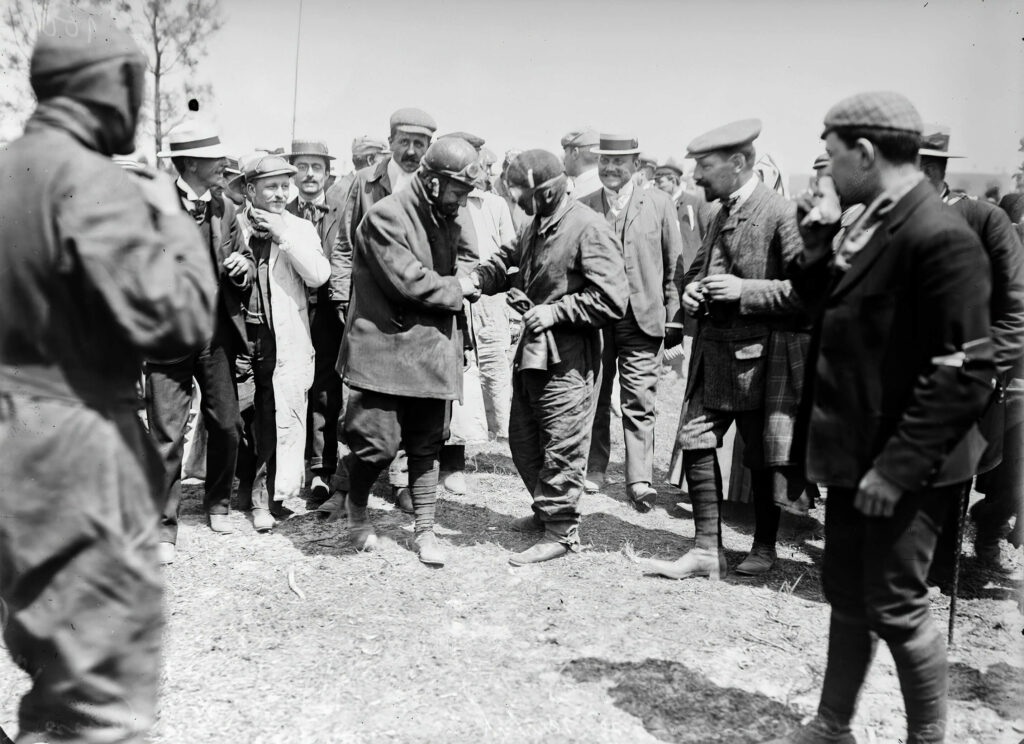
France, Soulitré, Ferenc Szisz, winner of the Grand Prix de l'ACF, and Albert Clément, third place winner, shaking hands after the race (Photo source: Fortepan / French National Library)
After the First World War, Renault and Citroën continued their car repair industry, specialising in motor vehicles. In the early 1930s, he retired and lived in his villa in Auffargis, some 40 kilometres from Paris, until his death from pneumonia in 1944, at the age of 71. He was laid to rest in the Auffargis cemetery. He was succeeded by his wife in 1958, and their black marble tomb, inscribed 'Famille Sis', is maintained by the French Automobile Club and Renault Works.
In memory of
In France, Ferenc Szisz is commemorated by several monuments and three museums: the Szisz Museum, part of the Renault Museum near the Le Mans circuit, the Renault History Museum, the Sárrét Museum in Szeghalmi and the Haris Brothers Motor Museum.
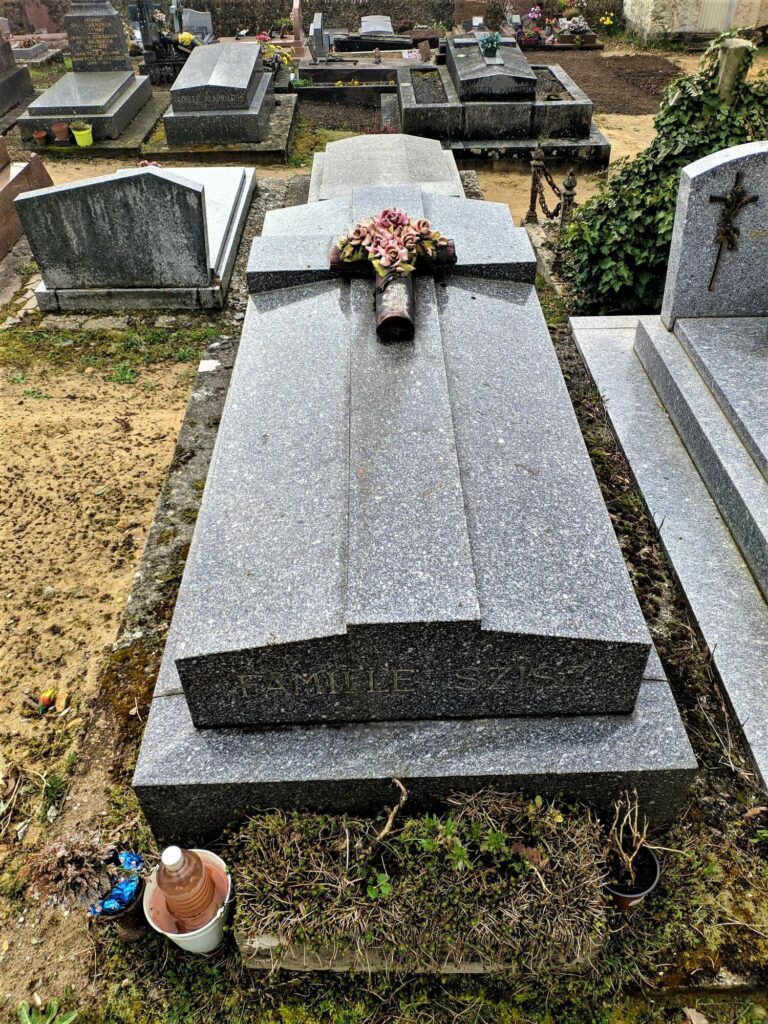
The grave of the Sisi family at their home in the Auffargis cemetery, forty kilometres from Paris. (Source: www.facebook.com/p/Szisz-Ferenc-The-1st-Grand-Prix-Winner-1906
The Hungaroring's first (right) corner is named after Ferenc Szisz, and since 2003 a statue of the car has been welcoming visitors in front of the new main entrance. To commemorate the 100th anniversary of the first GP victory in Hungary in 1906, the Municipality of Szeghalom City erected an authentic bust of Ferenc Szisz on the square in front of the city sports hall on 4 August 2006. At the same time, a permanent memorial exhibition of the "first champion" was opened in the sports hall.


